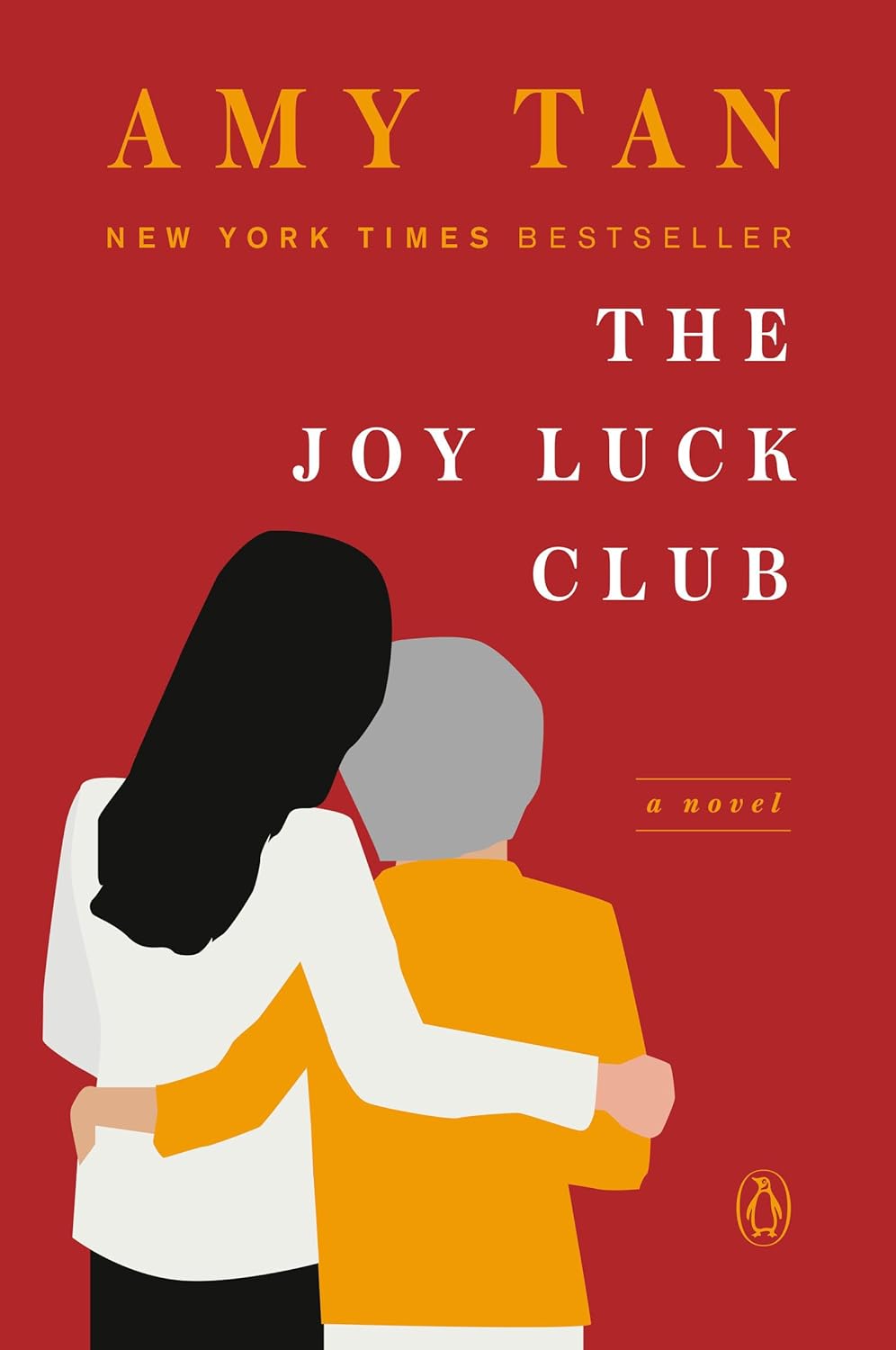One of the most well-known holidays that rolls around this time of the year is Mother’s Day – a day where we celebrate and appreciate the value and role our mothers play in our lives. The best book I have read that honors the relationships between mothers and daughters and pays homage to the influence mothers hold within us is The Joy Luck Club by Amy Tan.
I was first introduced to an excerpt from The Joy Luck Club in seventh grade, with Waverly Jong’s chapter being included as one of the assigned readings in my literature textbook. Although I did not fully understand the nuances and message hidden within the chapter, I remember being intrigued by Waverly’s personality and her strained relationship with her mother. So, years later, during summer break in college, I decided to revisit the story from the library and read the full novel this time. With its timeless themes and artful language, The Joy Luck Club explores the intergenerational mother-daughter relationships between Asian American women and the opposing cultures and identities each develops along their journey. As an Asian American woman who was raised by immigrant parents, I connected with many of the experiences and emotions described within the novel, particularly the daughters’ viewpoints, and appreciated the way Tan wove a variety of perspectives together into a cohesive narrative. Here are my reflections on the acclaimed novel and its four daughter characters (spoiler alert!).
Jing-mei “June” Woo: One of my favorite characters in the story is Jing-mei, or June, Woo. While the other daughters in the novel have chapters that are accompanied by chapters containing their mother’s perspectives, Jing-mei is the only daughter in the novel where we don’t read any chapters from her mother’s perspective, since her mother passed away at the beginning of the story. Thus, we mainly understand Jing-mei purely from her own perspective as a daughter. I relate to many of Jing-mei’s experiences as she felt inadequate to her mother’s hopes of her becoming a music or academic prodigy like her friend’s daughter, Waverly Jong, and how she never felt like she could make her mom proud. However, it was heartwarming to see how throughout the story, Jing-mei finally understood that her mom truly accepted and loved her in the “Best Quality” chapter, where she chooses to allow her mom the last crab piece to eat rather than taking it for herself. Jing-mei’s small yet kind and considerate gesture demonstrates to her mother Jing-mei’s true, best quality: her selflessness and compassion, a valuable characteristic in itself. Through this chapter, Jing-mei comes to the realization that her mother’s gift of the jade penchant at the beginning of the chapter represents how her mom believes that she is worthy of the best quality jade and being the best version of herself, which uplifts Jing-mei’s confidence. As someone who has faced pressure to live up to others’ expectations and standards, I was especially moved by how Jing-mei was able to reflect and learn her true value, despite having always felt like she let down her mother her whole life. It was especially touching in the final chapter of the story when Jing-mei visits China to meet her long-lost half-sisters, who her mom abandoned during her trek to immigrate to the US from China, long before Jing-mei was born. Jing-mei’s hugs and tears with her sisters in the end, bonded through their love for their mother, highlights the warmth and connection they have with each other, despite each of their own, unique, complex emotions they feel towards their shared late mother.
Rose Hsu Jordan: I had trouble understanding and empathizing with Rose’s personality at first, as her character was portrayed as always being hesitant and passive in making any kind of decision. When her younger brother Bing drowns in an accident where she is supposed to watch over him, she feels responsible for her carelessness and blames herself for his death. As a result, this has affected her attitude in avoiding responsibilities so that she will not be blamed for her actions. In her marriage later on, Rose enjoyed allowing her husband to make all the decisions because they confused her. However, when her husband demands a divorce, Rose is stuck trying to decide whether it is best to sign the divorce papers and move out of their house, which is what her husband wants, or to fight for their marriage. Because she is “without wood,” or lacking strength and substance according to her mother, Rose avoids communicating with her mother or her husband about her marriage issues and instead tells different versions of her emotions to her friends and a psychiatrist. But after a long slumber, Rose’s mother calls her and urges her to find her voice and speak her opinions on the divorce. Rose takes the time to reflect on her indecisiveness and how throughout her marriage, her husband took advantage of her passiveness to force her to go along with anything he wanted. But now, she sees the truth more clearly and decides to not sign the divorce papers and not move out of their house. Seeing how Rose’s mother encouraged her to speak up made my heart warm because it demonstrates the unconditional care and support she has for Rose. I was most proud of how far Rose had come from the beginning of the story, with the way that she stood her ground against her husband and voiced her desires and position.
Waverly Jong: Although Waverly Jong is the furthest character from my personality, her emotions and experiences are still universal to me. Waverly, a smart, successful, and tactical person, starts off as a chess prodigy and later blossoms into becoming a well-earned tax accountant. Her defining moment of growth for me was in the “Four Directions” chapter, where she struggles to bring her new fiance to meet her mother and family. Since her fiance is white, she is worried that her mother may judge and disapprove of her relationship with him, which causes a lot of bitterness and worry in Waverly. However, her mother actually likes and approves of Waverly’s fiance, and we discover that Waverly’s concerns and worries seem to be self-constructed, as she is the one silently noticing his flaws and behavior at her family’s dinner. By the end of the chapter, though, Waverly learns that her mother truly loves her and is waiting for her daughter to open up to her rather than fearing her judgment. This personal growth within Waverly as well as within her relationship with her mother was a turning point for Waverly’s character and showcased Waverly’s acceptance of her mom’s love for her and willingness to trust her mother and open up to her now. Tan’s writing shines as she describes Waverly’s fears and contrasting emotions throughout the chapter, especially in this line where Waverly worries over her mother’s criticism of her fiance – “even if I recognized her strategy, her sneak attack, I was afraid that some unseen speck of truth would fly into my eye, blur what I was seeing and transform him from the divine man I thought he was into someone quite mundane, mortally wounded with tiresome habits and irritating imperfections.”
Lena St. Clair: Similar to Rose Hsu Jordan, Lena St. Clair is another character who experiences marriage issues when she grows up. In the “Rice Husband” chapter, Tan details how Lena’s marriage is rocky due to the seemingly perfect balance of each person contributing equally in finances and expenses to keep the issue of money out of the relationship. But later on, their originally mutual decision eventually makes her question how balanced their relationship truly is, especially when her mother is shocked at why there is a list on the refrigerator in their house with all the monthly expenses each person is responsible for covering. When Lena and her husband have dinner with Lena’s mother that evening, Lena’s husband is surprised when her mother points out that Lena never eats ice cream, despite her still having to pay 50% of the expense for it. This shows how Lena’s husband does not even notice Lena’s tastes or recognize the growing resentment Lena feels within their marriage. Although Lena’s relationship with her mother is weak, her mother still notices the problems in Lena’s marriage and recognizes Lena’s passivity and inability to assert herself, asking her at the end, “Then why don’t you stop it?” Lena unintentionally assumes the role her mother had in her own marriage by allowing her husband to make most of their marital decisions as well. Though Lena’s story is left open-ended at the end of this chapter, I really appreciate Tan’s subtle hints of parallels between Lena’s marriage and her mother’s marriage and how her mother challenges Lena to think about the future of her marriage and voice her opinions.
—
Featured Image via Penguin Books

